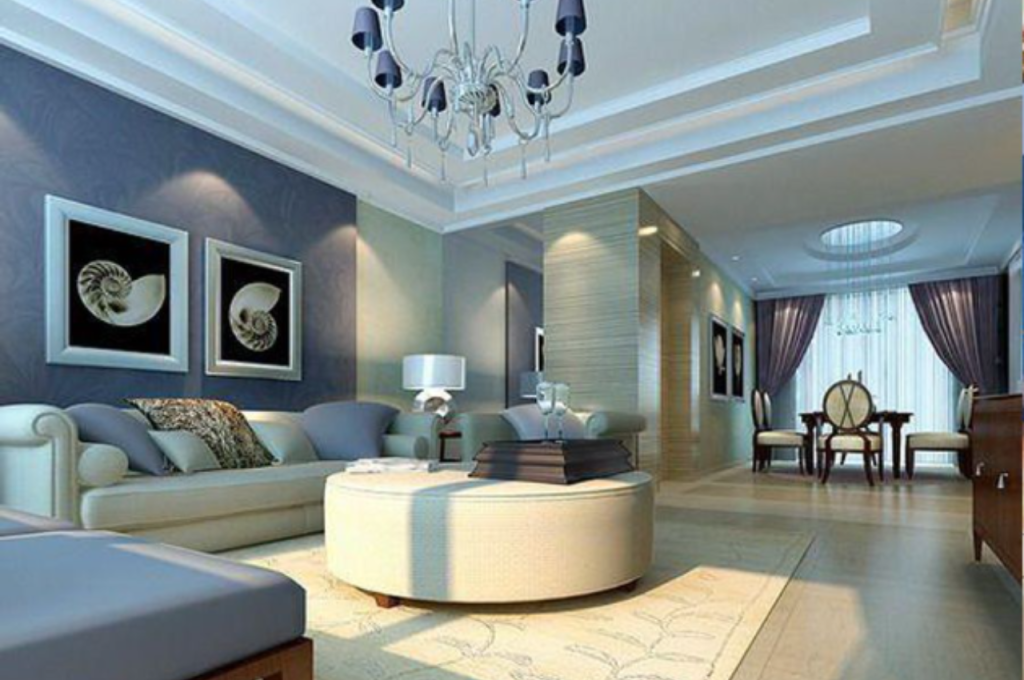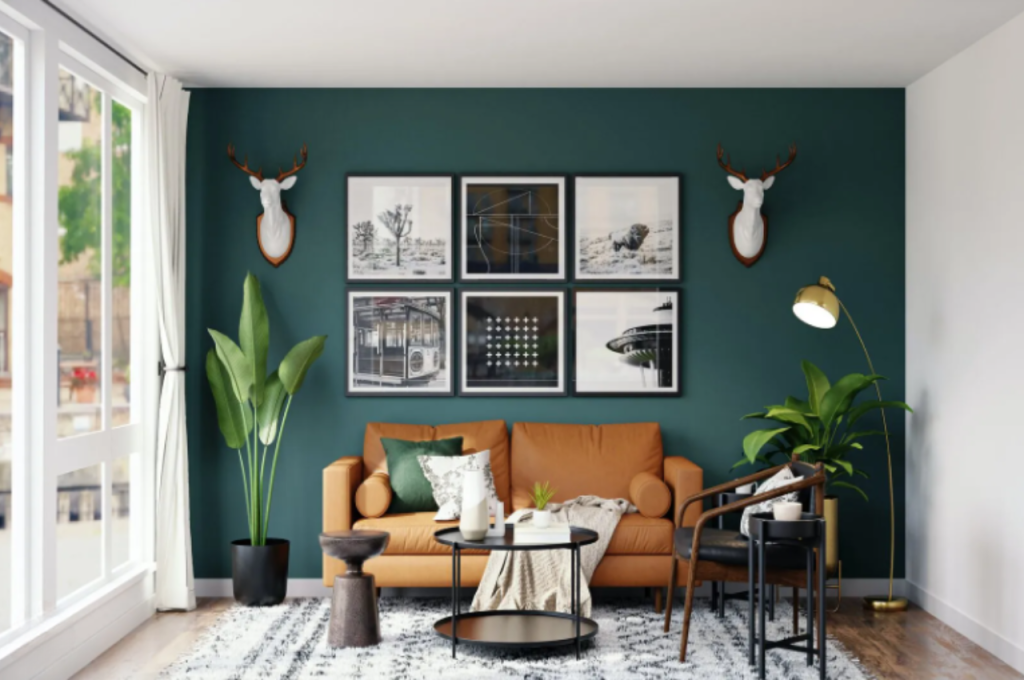Wall paint is a liquid coating applied to interior or exterior surfaces for decoration and protection. It adds color and enhances the aesthetic appeal of walls.
When it comes to transforming a space, wall paint plays a crucial role in setting the tone and ambiance of a room. Whether you are looking to create a cozy atmosphere or a vibrant environment, the right choice of wall paint can make a significant difference.
With endless color options and finishes available, selecting the perfect paint can be a fun and creative process. Additionally, high-quality paint not only adds beauty but also provides durability and protection to the walls against wear and tear. Explore the world of wall paint to bring life to your living spaces.
The Evolution of Wall Paint
Over the centuries, wall paint has evolved from basic pigments to intricate formulations seen today. These advancements have led to a wide array of options, including different finishes, textures, and application techniques. Understanding this evolution sheds light on the rich history and innovation behind the modern wall paint industry.

From Ancient Pigments to Modern Formulations
Ancient civilizations used natural pigments like clay and charcoal for painting walls. As time progressed, synthetic dyes were developed for more color options.
The innovation of adding binders and solvents improved paint adhesion and durability. Today, modern paints boast a wide range of colors and finishes.
The Influence of Technology On Paint Composition
Advancements in technology revolutionized the composition of paints. Nanotechnology and polymer science have led to highly durable and eco-friendly paint formulations.
Chemical engineering has enabled the creation of low-VOC and eco-conscious paints that are safe for both the environment and human health.
Understanding Color Psychology
Color psychology explores how different colors can impact emotions and behavior. It helps us understand why certain shades evoke specific feelings and reactions.
Impacts of Different Colors On Mood and Psychology
- Red: Symbolizes energy and passion, often increasing heart rate and stimulating.
- Blue: Known for calming effects, promoting relaxation, and reducing stress levels.
- Yellow: Represents happiness and optimism, promoting feelings of joy and warmth.
Cultural Variations in Color Symbolism
- White: In Western cultures symbolizes purity, while in some parts of Asia, it signifies mourning.
- Black: Associated with mourning in Western societies but symbolizes power and sophistication in fashion.
Importance of Proper Surface Preparation
Proper surface preparation plays a crucial role in the success and longevity of wall paint. Before applying a fresh coat of paint, it is essential to ensure that the walls are thoroughly cleaned and any existing damage is repaired. These preparatory steps are fundamental to achieving a professional finish and ensuring the paint adheres effectively to the surface.
Cleaning and Repairing Walls
Before painting, cleaning and repairing the walls are essential steps to ensure a smooth and flawless finish. Dust, dirt, and grime must be removed using a mild detergent solution and a scrubbing brush. Additionally, any cracks or holes should be repaired using a suitable filler and sanded down to create a uniform surface.
Priming for Long-lasting Results
Priming the walls plays a crucial role in ensuring long-lasting and durable paint results. A high-quality primer helps to seal the surface, improve paint adhesion, and create a uniform base for the paint to adhere to. It also helps to prevent the previous wall color from bleeding through and enhances the paint’s ability to withstand wear and tear.
Exploring Different Types of Wall Paint
A wall paint is a type of coating applied to interior or exterior walls to enhance their appearance and protect the surface. There are various options available, including matte, gloss, satin, and textured finishes. Each type of wall paint offers unique characteristics and benefits, allowing homeowners to find the perfect match for their desired look and functionality.
Wall paint is an essential element in home decor, as it not only adds a pop of color but also protects the walls from wear and tear. When it comes to choosing the right wall paint, there are various factors to consider, including the type of finish. In this blog post, we will delve into the different types of wall paint finishes and their unique characteristics. From matte to gloss and satin finishes to specialty paints for unique effects, let’s explore the world of wall paint!
Matte
Matte paint is a popular choice for many homeowners due to its timeless and sophisticated look. It has a flat finish that does not reflect light, making it ideal for concealing imperfections on the surface of the walls. Matte finishes are perfect for bedrooms, living rooms, and dining areas, as they create a cozy and inviting ambiance. However, it’s important to note that matte paint is not as durable as other finishes, so it may not be suitable for high-traffic areas or spaces that are prone to moisture.
Gloss
On the opposite end of the spectrum, gloss paint offers a shiny and reflective finish that brings vibrancy to any space. With its ability to reflect light, gloss paint enhances the brightness of a room, making it perfect for small or dark areas that require more luminosity. Additionally, gloss finishes are highly durable and easy to clean, making them suitable for high-traffic spaces like kitchens, hallways, and bathrooms. Its smooth surface also resists stains, making it a practical choice for families with children. Keep in mind that gloss paint tends to highlight any surface imperfections, so proper wall preparation is essential before applying this finish.
Satin Finishes
Satin finishes strike the perfect balance between matte and gloss, offering a subtle sheen that adds a touch of elegance to any room. This finish is versatile and suitable for various areas of the house, including bedrooms, living rooms, and hallways. Satin paint is known for its washability, making it easy to maintain and clean. It’s also excellent at resisting mildew and moisture, making it a popular choice for bathrooms or laundry rooms. The smooth yet subtle shine of satin finishes tends to hold up well over time, providing durability without being overly reflective.
Specialty Paints for Unique Effects
If you’re looking to make a statement or add a unique touch to your walls, specialty paints are a fantastic option. These paints are specially formulated to create various effects, such as metallic finishes, textures, or even chalkboard surfaces. Metallic paints give an opulent and luxurious look, while textured paints can add depth and dimension to otherwise flat walls. Chalkboard paint transforms any surface into a writable and erasable chalkboard, perfect for kids’ bedrooms, playrooms, or even the kitchen for keeping track of grocery lists or leaving messages. Whatever effect you’re aiming for, specialty paints can help you achieve a truly distinctive and personalized look in your home.
Application Techniques for Professional Results
Wall paint is a crucial aspect of interior design, responsible for creating a visually pleasing atmosphere. By employing effective application techniques, professionals achieve flawless results, enhancing the overall appeal of any space. Mastering these techniques can elevate the look and feel of a room, providing a stunning finish.

Wall paint is not just about choosing the right color; it’s also about achieving a smooth and even finish for a professional-looking result. The application techniques used can make all the difference in the outcome. In this section, we will discuss the different tools and methods that professionals rely on to achieve flawless coats of wall paint.
Brushes
Using the right brush is crucial to achieving smooth and even coats of wall paint. A high-quality synthetic bristle brush with tapered ends is recommended, as it allows for precise control and minimizes the appearance of brush strokes. To avoid excess paint build-up, dip only one-third of the brush into the paint and tap off any excess. Start painting from the top corner of the wall, using long and even strokes, working in sections. Take breaks in between to ensure the paint doesn’t dry unevenly.
Rollers
Rollers are another popular tool for applying wall paint, especially when covering large surfaces. Opt for a high-quality roller cover with the appropriate nap to achieve the desired texture. Thicker nap rollers are ideal for textured walls, while thinner nap rollers work best on smoother surfaces. Load the roller evenly by rolling it back and forth in the paint tray. Start at the top corner of the wall and use a “W” or “M” motion to ensure an even distribution of paint. Apply light pressure to avoid creating lines and streaks.
Spray Guns
Spray guns provide an efficient and time-saving method for applying wall paint, making them popular among professionals. However, they require proper equipment and safety measures. When using a spray gun, ensure the surrounding area is well-covered to avoid overspray. Adjust the pressure and flow rate according to the manufacturer’s instructions to achieve an even coat of paint. Keep the gun moving in an overlapping motion to prevent build-up in one area. Remember to wear protective clothing and a mask to avoid inhaling paint particles.
Tips for Achieving Smooth and Even Coats
- Prepare the surface properly by cleaning and filling any imperfections.
- Priming the wall before painting can improve adherence and coverage.
- Work in small sections to maintain control and prevent paint from drying too quickly.
- Blend each section by feathering the edges to avoid visible lines.
- Avoid excessive pressure or excessive thinning of the paint.
- Allow each coat to dry completely before applying additional coats.
- Inspect the wall under different lighting conditions to ensure a consistent finish.
Remember, the key to professional results lies in using the right tools and employing proper techniques. Whether you prefer brushes, rollers, or spray guns, following these application tips will help you achieve a flawless and impressive finish for your walls.
Addressing Common Painting Challenges
When it comes to home improvement, giving your walls a fresh coat of paint can instantly transform the look and feel of a room. However, painting comes with its own set of challenges, from dealing with moisture and mildew to hiding wall imperfections. Let’s explore some strategies for addressing these common painting challenges to ensure a smooth and successful paint job.
Dealing With Moisture and Mildew
Moisture and mildew can wreak havoc on your freshly painted walls, causing peeling, discoloration, and unpleasant odors. To combat this issue, it’s crucial to address any underlying moisture problems before painting. Ensure that your walls are completely dry and free from any signs of mildew or mold. Consider using a moisture-resistant primer and paint to provide an extra layer of protection against future moisture damage. Additionally, proper ventilation and the use of dehumidifiers can help prevent moisture buildup and keep your walls looking pristine for longer.
Strategies for Hiding Wall Imperfections
Imperfections such as cracks, dents, and uneven surfaces can detract from the overall appearance of your walls. Fortunately, there are several strategies for concealing these flaws and achieving a smooth, flawless finish. Start by thoroughly inspecting the walls and addressing any structural issues before beginning the painting process. Utilize spackling or joint compound to fill in any gaps or holes, followed by sanding to create a smooth surface. Consider using textured paint or decorative finishes to camouflage imperfections and create visual interest. Proper preparation and the use of high-quality fillers and paints can make a noticeable difference in the final result.
Sustainability and Eco-friendly Alternatives
Sustainability and Eco-Friendly Alternatives play a crucial role in the realm of wall paints. By opting for Low-VOC and Zero-VOC Paint Options, individuals can significantly reduce their environmental impact.
Low-VOC and Zero-VOC Paint Options
Low-VOC and Zero-VOC paints emit drastically fewer harmful chemicals into the air, promoting better indoor air quality.
By choosing Low-VOC and Zero-VOC paints, you can ensure that your living spaces are not only visually appealing but also safe and eco-friendly.
Recycling and Disposal Considerations
Proper disposal of paint cans and unused paint can contribute to a more sustainable environment.
- Recycle empty paint cans to reduce waste.
- Consider donating excess paint to community projects or organizations in need.
- Use leftover paint for touch-ups or creative DIY projects to minimize waste.
Personalizing Spaces With Creative Wall Painting Ideas
Enhancing living spaces through creative wall painting techniques allows for unique expressions and a touch of personality. With the right color palette and design, walls can be transformed into captivating focal points.

Incorporating Murals and Wall Art
Murals and wall art bring vibrancy and character to any room, making it more inviting and visually appealing.
Utilizing Paint to Define Areas and Add Dimension
Paint can be used to differentiate spaces within a room, creating a sense of depth and enhancing the overall ambiance.
Conclusion
To sum it up, wall paint is a versatile and essential part of interior design. With a wide range of colors and finishes, it has the power to transform any space. Understanding the different types and benefits can help you make informed decisions for your home.
Choose the right wall paint to create a beautiful and personalized environment that reflects your style and personality.

